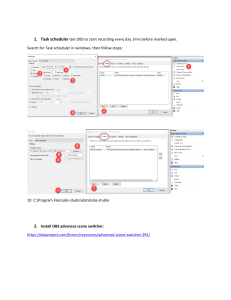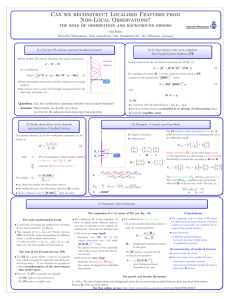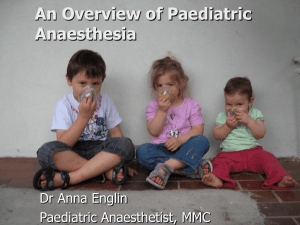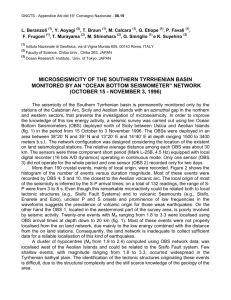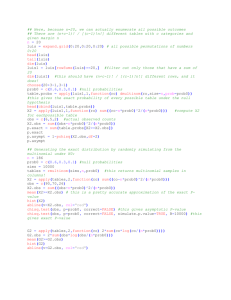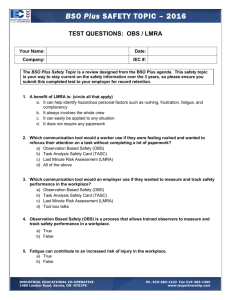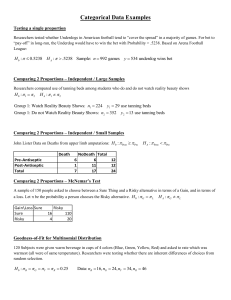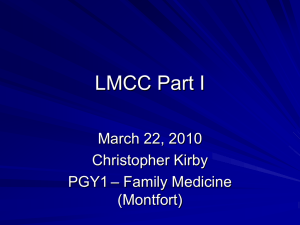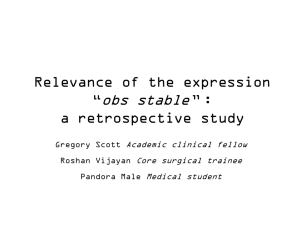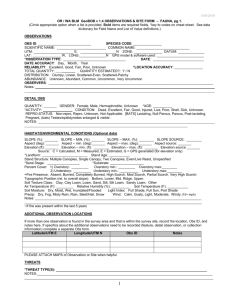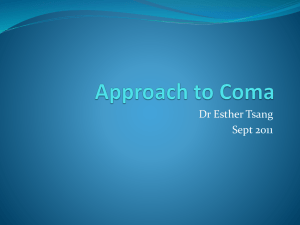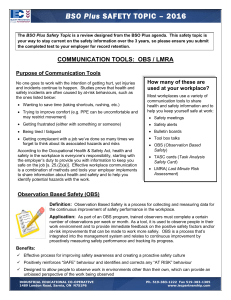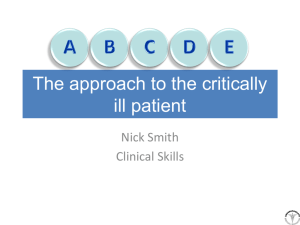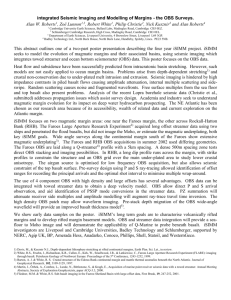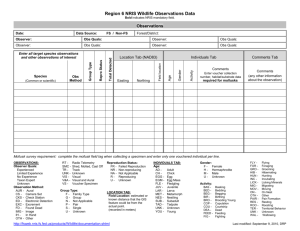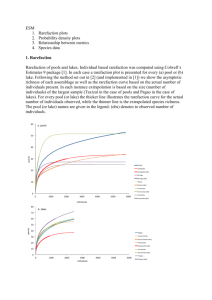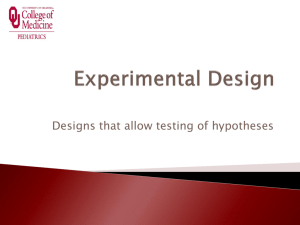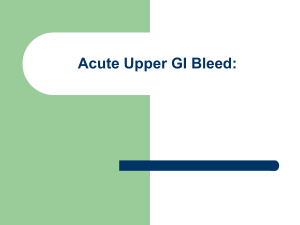Unwell patient (PPT-3
advertisement
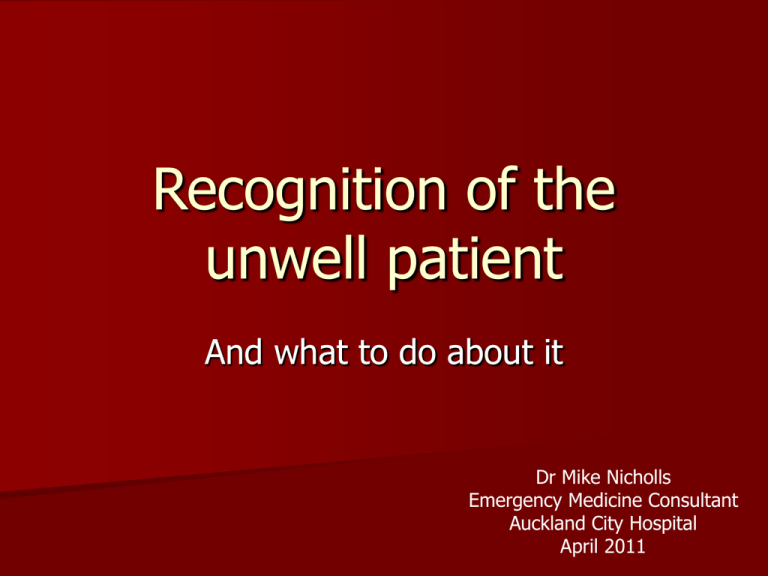
Recognition of the unwell patient And what to do about it Dr Mike Nicholls Emergency Medicine Consultant Auckland City Hospital April 2011 Approach in ED Seek and treat the serious stuff – (then figure out what could be going on). Goals in ED: – Improve their condition – Move them on (6 hour target, 3-2-1) – Learn – Have a good time A systematic approach can help The patient – (Info from old notes) Presenting complaint ABCDE(FG) – OBS!!! The patient…important background Past history eg diabetes, ICU asthma Medications eg prednisone, beta blockers Social history eg lives alone, heavy etoh, ivdu Family history eg SAH Others…family, friends, ambulance, nurse, clerk, etc…good sources of info The presenting complaint… beware of… Abdo pain Young female, elderly, severe Headache Sudden onset, severe, worst ever, fever Back pain Red flags Numerous others Trauma : mechanism Syncope : unexplained in elderly, febrile Chest pain : unexplained, “atypical” Fever : with other abnormal obs Breathlessness : unexplained etc Approach in ED Exclude the serious stuff then figure out what could be going on. Think…ABCDE(FG) Airway Breathing Circulation Disability Exposure (don’t ever) Forget Glucose (and other investigations) The Obs Most of the important info is in the obs (observations). P, BP, RR, SaO2, T, GCS, Gluc, (PEFR) So ALWAYS look at the obs. – In the ED notes and ambulance notes Repeating the obs is useful – do it yourself if there is likely to be a delay – Obs which are abnormal MUST BE REPEATED Airway…recognising problems Position Foreign body Anaphylaxis Noisy breathing in ED is usually a serious sign Voice LOC/GCS (<9) And what you do about it…. Airway Oxygen Position OP/NP ETT Breathing…recognising problems Respiratory rate >20 Oxygen sats <92% Colour Sweating Quality of respirations Breath sounds Circulation…recognising problems Colour JVP Pulse <50, >90* bpm BP <100* systolic Cap refill >2 secs Peripheral circulation cool Heart sounds ECG And what you do about it…. Circulation IV access (x2) IV fluid 0.9%saline….bolus typically 1000ml stat Bed position Oxygen Aspirin Disability GCS (E4, M6, V5) or AVPU GCS<9 Confusion/agitation/delirium Cranial nerves Peripheral nerves Seizure And what you do about it…. Disability Analgesia Oxygen Position Benzodiazepine Exposure Temperature 36<normal<38 Abdomen Limbs other areas – ENT – Perineum/buttock And what you do about it…. Exposure Antipyretic/Paracetamol Antiemetic Antibiotics (DEF) Glucose… (and other investigations) Low / High Other lab tests… – venous gas gives you a lot of information Lactate (>2) Hb Na, K, Ca pH FBC, UEC, LFT, coag, G+H ECG Urine (IDC), BHCG CXR And what you do about it…. Glucose 50ml 50% dextrose iv for hypoglycaemia Iv saline, insulin for hyperglycaemia And what you do about it…. Consider – Patient – Presenting complaint ABCDEFG (seek and treat…seek abnormalities and treat them) Get help – Senior doctor – Senior nurse – Other doctor – Other nurse – Bedside alarm Consider – Patient location in the ED…do they need higher (or lower) level of care?
